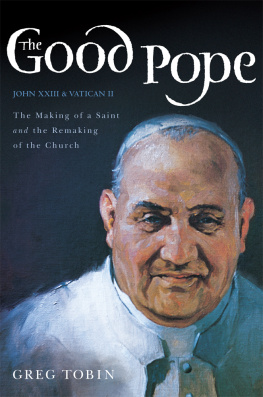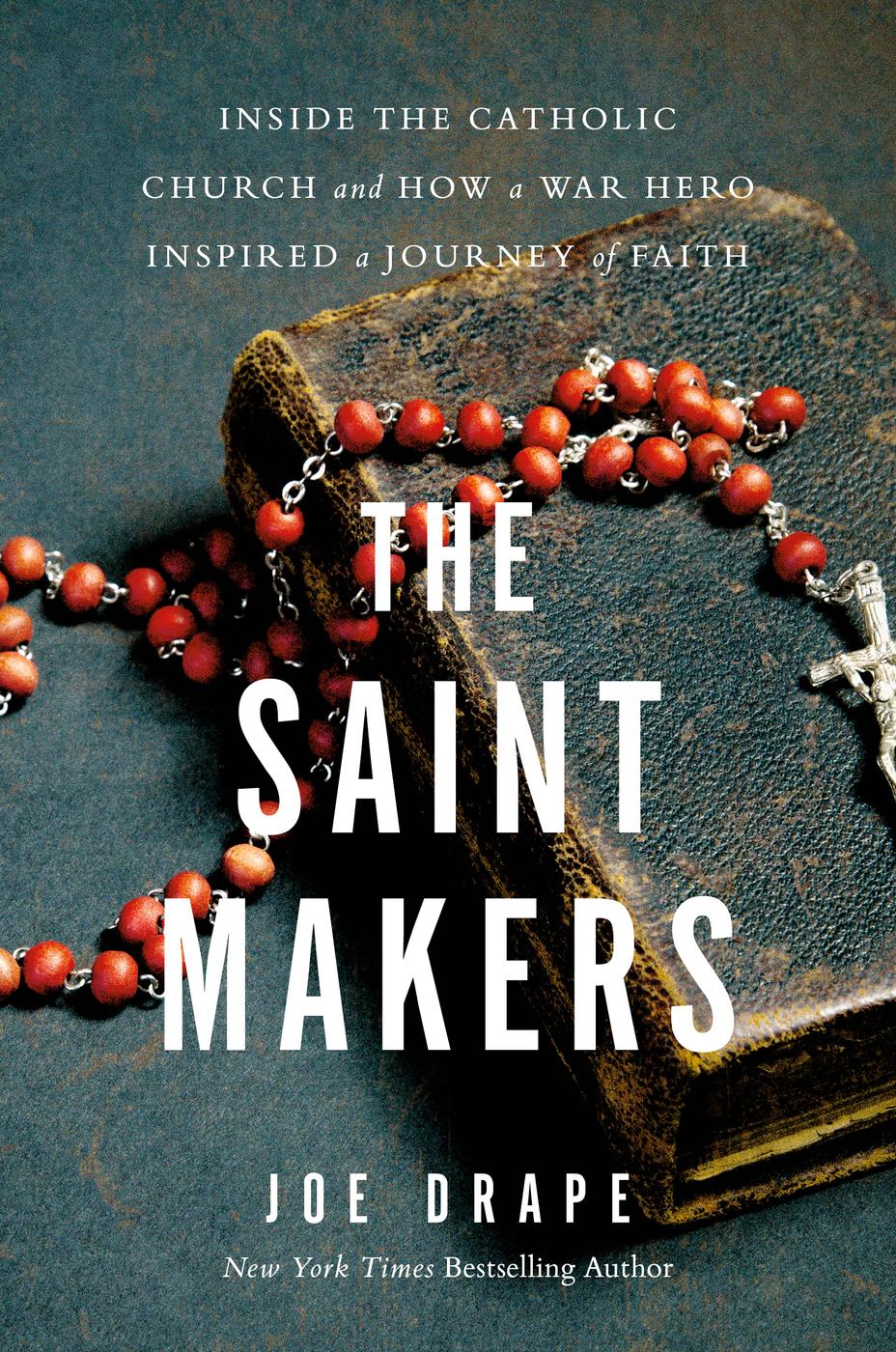
Copyright 2020 by Joe Drape
Cover design by LeeAnn Falciani
Cover photographs Shutterstock: Rosary Jakub Krechowicz; texture VolodymyrSanych; texture Nik Merkulov
Cover copyright 2020 by Hachette Book Group, Inc.
All photographs courtesy of the Father Kapaun Guild except for those featuring Chase Kear and Avery Gerleman, which are courtesy of Chase Kear and family and of Avery Gerleman and family, respectively.
Robert Ellsberg, Blessed Among Us, from Give Us This Day: Daily Prayer for Todays Catholic (Collegeville, MN: Liturgical Press, 2020). Excerpts used with permission.
Ascension from Journey: New and Selected Poems, 19691999 by Kathleen Norris, 2020. Reprinted by permission of the University of Pittsburgh Press.
Hachette Book Group supports the right to free expression and the value of copyright. The purpose of copyright is to encourage writers and artists to produce the creative works that enrich our culture.
The scanning, uploading, and distribution of this book without permission is a theft of the authors intellectual property. If you would like permission to use material from the book (other than for review purposes), please contact permissions@hbgusa.com. Thank you for your support of the authors rights.
Hachette Books
Hachette Book Group
1290 Avenue of the Americas
New York, NY 10104
HachetteBooks.com
Twitter.com/HachetteBooks
Instagram.com/HachetteBooks
First Edition: December 2020
Published by Hachette Books, an imprint of Perseus Books, LLC, a subsidiary of Hachette Book Group, Inc. The Hachette Books name and logo is a trademark of the Hachette Book Group.
The Hachette Speakers Bureau provides a wide range of authors for speaking events.
To find out more, go to www.hachettespeakersbureau.com or call (866) 376-6591.
The publisher is not responsible for websites (or their content) that are not owned by the publisher.
Library of Congress Cataloging-in-Publication Data
Names: Drape, Joe, author.
Title: The saint makers: inside the Catholic Church and how a war hero inspired a journey of faith / Joe Drape.
Description: First edition. | New York: Hachette Books, 2020. | Includes bibliographical references and index.
Identifiers: LCCN 2020030724 | ISBN 9780316268813 (hardcover) | ISBN 9780316268806 (ebook)
Subjects: LCSH: Kapaun, Emil, 19161951. | Catholic ChurchKansasPilsenClergyBiography. | Military chaplainsUnited StatesBiography. | Korean War, 19501953ChaplainsUnited StatesBiography. | HeroesUnited StatesBiography. | Korean War, 19501953Prisoners and prisons, American.
Classification: LCC BX4705.K2197 D73 2020 | DDC 282.092 [B]dc23
LC record available at https://lccn.loc.gov/2020030724
ISBNs: 978-0-316-26881-3 (hardcover), 978-0-316-26880-6 (ebook)
E3-20201102-DA-PC-COR
American Pharoah: The Untold Story of the Triple Crown Winners Legendary Rise
Soldiers First: Duty, Honor, Country, and Football at West Point
Our Boys: A Perfect Season on the Plains with the Smith Center Redmen
Black Maestro: The Epic Life of an American Legend
To the Swift: Classic Triple Crown Horses and Their Race for Glory
The Race for the Triple Crown: Horses, High Stakes, and Eternal Hope
In the Hornets Nest: Charlotte and Its First Year in the NBA
To Mary & Jack
You are my answered prayers
Explore book giveaways, sneak peeks, deals, and more.
Tap here to learn more.

I t took a three-by-three-by-three-foot wooden crate crammed with 8,268 pages of documents to launch this pilgrimage from Wichita, Kansas, to Rome, Italy, andwith patiencehopefully, the Gates of Heaven. Inside was the lifes work of two priests separated by fifty-seven years. Father John Hotze signed the FedEx bill, then watched as the three-hundred-pound crate was scooted onto a dolly.
He then watched his scholarship roll out the door.
It was July 2, 2011, and inside that crate was the remarkable life of Father Emil Kapaun. In the previous dozen years, Father Hotze had unearthed every letter the military chaplain and war hero had written to his family and friends back in Kansas. He had unearthed copies of the sermons Father Kapaun had given from pulpits in farm parishes as well as theaters of war. Father Hotze had the notebooks Kapaun had filled while studying to become a Catholic priest in the 1930s. Then there was the testimony of more than a hundred witnesses, from Korea to Kansas, recounting the heroics Father Kapaun had performed on the battlefield and in a prisoner-of-war camp.
But Father Hotze asked himself for the gazillionth time, Was it enough?
Father Hotze, fifty-one, was a homegrown and beefy Kansan who was more comfortable in dungarees and a work shirt than the priestly uniform of black that he was sweating through on this June morning, a day that had transformed south central Kansas into a broiler. On his drive in to the office of the Diocese of Wichita that morning, he had seen the combines vibrating in the heat as the farmers hustled to bring the wheat in before a sudden thunderstorm could render a years work, and hundreds of thousands of dollars of investment, into drowned stalks barely worth the pennies on the insurance claim they would have to file.
Like the farmers, Father Hotze was worried about the fruits of his own harvestthe materials sown and reaped into those boxes were off to the Vatican where the contents would be measured by the most divine of standards. The life and times of Father Emil Kapaun were about to be reviewed and challenged, picked apart, and prayed over by layers of canon lawyers, Catholic cardinals, and, ultimately, the pope himself.
Father Kapauns arc from a farm boy educated in a one-room schoolhouse during the Depression to the most decorated chaplain in military history was compelling. His battlefield exploits were the stuff of adventure novels: He dodged the bullets of Chinese soldiers to rescue wounded Americans. He put them on his shoulders and carried them for days over frozen snow in subzero temperatures. In a North Korean prisoner-of-war camp, Father Kapaun kept hundreds of his fellow soldiers alive, and instilled the will to live in thousands more, by stealing food for their shriveled bodies and saying Mass and ministering to their crushed souls. When his captors decided they had had enough of the defiant priest, they removed him from the group. As he was carried away by stretcherstarved, sick, and unable to standto die alone in a fetid Death House, his fellow prisoners wept. They were Catholics and Christians, Jews and Muslims all touched deeply by this remarkable priest. Father Kapaun astonished them once more when he forgave his tormentors before them and asked them to forgive him.
What hung in the balance was a question far beyond this earth: Did this simple Kansas priest who died a horrible death in a North Korean prison camp at the age of thirty-five really belong in the Congregation of Saints? Father Hotze understood this was a pass-or-fail test. He may have looked like he should be baling hay, but Father Hotze possessed a disciplined mind that rivaled his unshakable faith.
Both priests had been forged by indecision and doubt.
Growing up in Kansas, John Hotze was a fine student and decent athlete but one who was forever adrift. He earned a business degree from Wichita State, and had done well enough to be accepted into the universitys business school to pursue a masters. He cruised through his first year of studies but struggled in his second year to find motivation. Hotze detested sitting in a classroom and, after three straight semesters of enrolling in classes that he subsequently dropped after a few weeks, set out to find himself. Where? At first it didnt matter. His brother Bill was an army sergeant stationed in Germany, which was reason enough for Hotze to spend some time there and traveling through Europe.
Next page


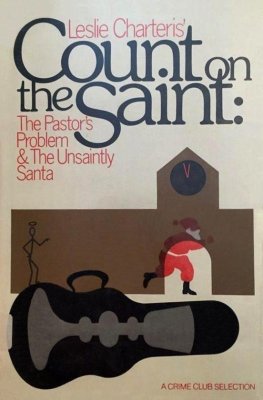
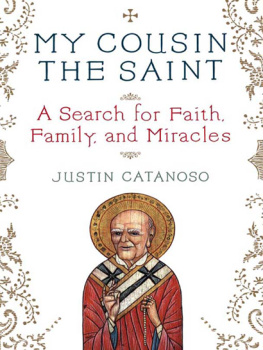
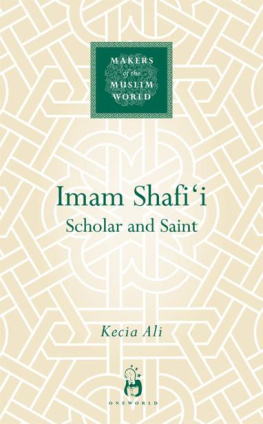
![Louis de Montfort - The Saint Louis de Montfort Collection [7 Books]](/uploads/posts/book/265822/thumbs/louis-de-montfort-the-saint-louis-de-montfort.jpg)
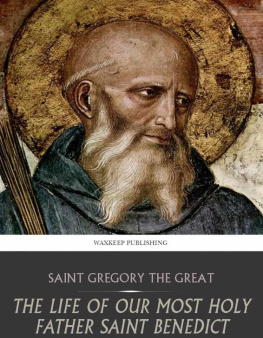
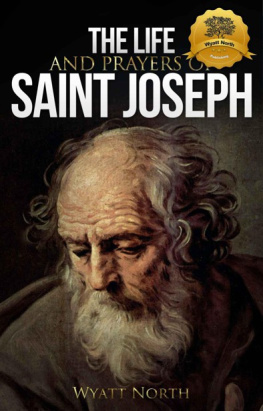
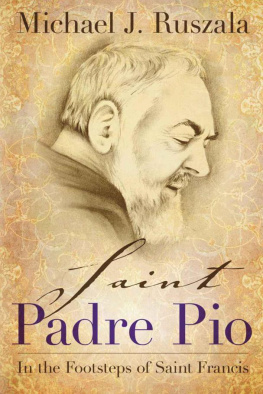
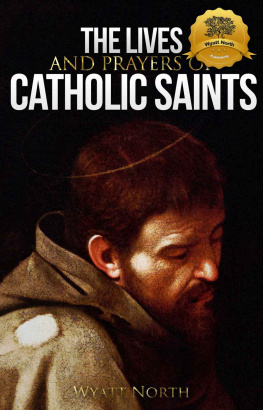
![Saint Alphonsus de Liguori - The Saint Alphonsus de Liguori Collection [30 Books]](/uploads/posts/book/134324/thumbs/saint-alphonsus-de-liguori-the-saint-alphonsus-de.jpg)
